-
-
- Bridging Scales from Below: The Role of Heterogeneities in the Global Water and Carbon Budgets
- Increasing Occurrences of Cyanobacterial Blooms Driven by Climate Change Factors
- Carbon Capture and Utilization
- Integrated Coastal-Inland Flood Model for Climate Change
- Pathways for Sustainable and Climate-Resilient Planning of Water-Energy-Food Security Nexus
-
- Air Quality and Health: A Paradigm Shift
- Surface Water Quality and Emerging Contaminants
- Microbial detoxification of persistent organohalide pollutants (POPs)
- Nutrients Removal in Waterbodies via Sustainable Pathways
- Centre for Water Research (CWR) researchers join their forces with U of T researchers for microplastics pollution detection and control in water and wastewater
- Dealing with Hard-To-Treat Industrial Wastewater
- Valorization of Bioresources – Towards a Circular Economy
-
- Intelligent Traffic Diffusion Plan Generation, Effective Assessment and Dissemination Strategies
- Transforming Waste into Resources for Infrastructural Development
- Look-Ahead Integrated Geophysical Investigation System (IGIS) for Singapore Tunnels
- Next-Generation Airport Pavements with Full-Scale Instrumented Testing
-
- Centre for Advanced Materials and Structures
- Centre for Hazards Research
- Centre for Resilient Underground Infrastructure and Engineering (CRUISE)
- Centre for Transportation Research
- Centre for Water Research
- Centre for Resource Circularity and Resilience (CR)2
- Centre for Offshore Research and Engineering (CORE)
- Centre for Environmental Resilience
- Safety & Health Committee
- Completed Research Projects
- Research Brief
- Achievements (in the media)
Evaluation of In-Situ Consolidation of Dredged and Excavated Materials at the Reclaimed Next Generation Tuas Port
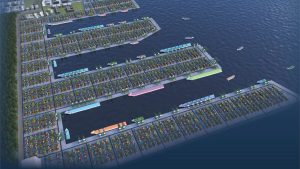
Scarcity of sand supply as fill material has affected land reclamation practices worldwide, leading to countries such as Japan, China, Australia and Germany resorting to soft and compressible clayey materials as fill, while accepting that long-term residual ground settlements would surface over time.
In Singapore, land reclamation is the cornerstone of the nation’s rapid development. In order to support the nation’s demand in maritime infrastructure, land reclamation of the Tuas Next Generation Port is planned and slated to be the world’s largest automated port when completed in year 2040. In view of the shortage of sand, dredged and excavated materials have been used to reclaim the new port. Unlike other past reclamation projects, the challenge in this Tuas project is the strict residual ground settlement of no more than 40mm due to use of precision instrumentation in the automated port operation.
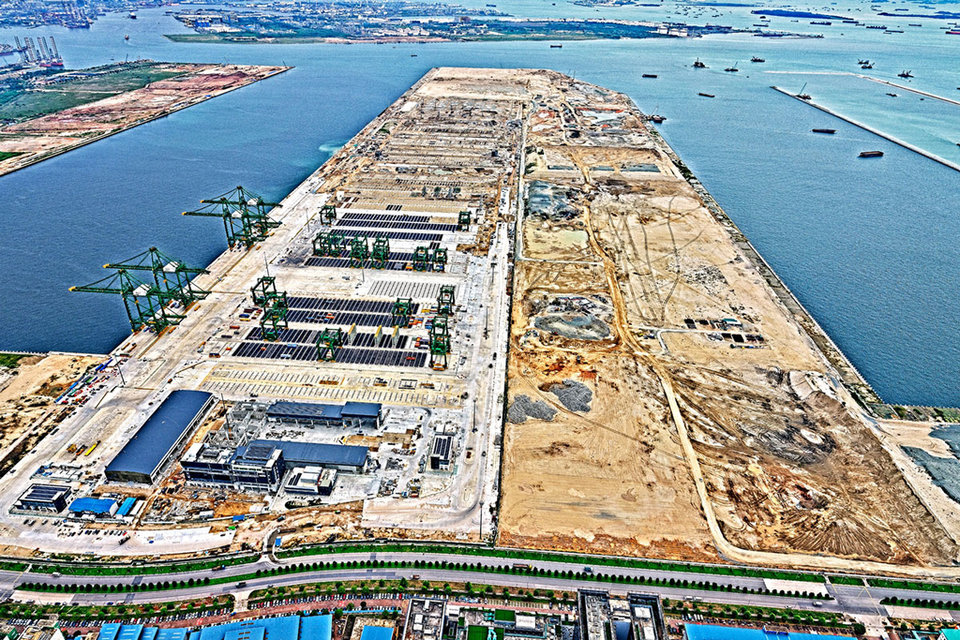
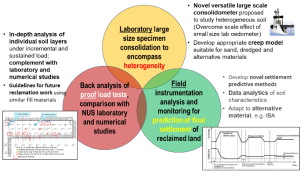
This project under the Centre for Offshore Research & Engineering (CORE) aims to investigate the expected ground settlement over the 60-year design lifespan of the port. With the rich amount of information from site investigation coupled with our background on land reclamation, the scope of this project includes:
- Developing a novel creep model encompassing wide variability of soil compositions
- Creating a digital twin of the reclaimed land for strategic geotechnical design and ground improvement
- Formulating a methodology for prediction of long-term settlement of reclaimed land under service load
- Establishing a formal library of characteristics of dredged and excavated materials (and possibly incinerated bottom ash) for land reclamation and general construction
- Offering MPA and sister reclamation agencies guidelines for future similar land reclamation technology
State-of-the-art machine learning and optimization techniques have also been incorporated in the study to facilitate smarter, efficient and accurate analysis of such extended long-term residual settlement prediction
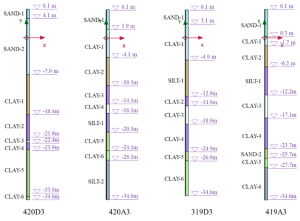
Soil profiles developed based on broehole information
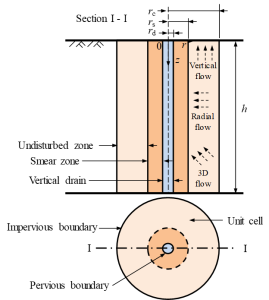
Geometry of a unit cell
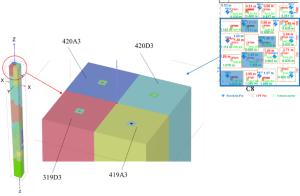
3D numerical model of soil profiles
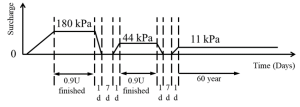
Preloading Strategy

Settlement Prediction of ground based on loading strategy
For more details, please contact:
Assoc Prof Chian Siau Chen, Darren
Email: sc.chian@nus.edu.sg

